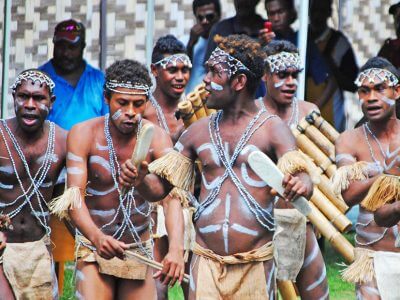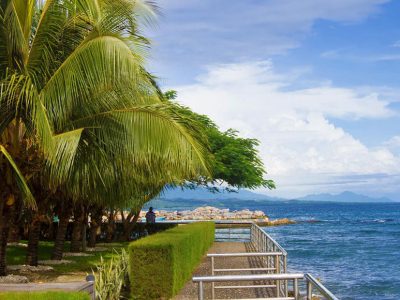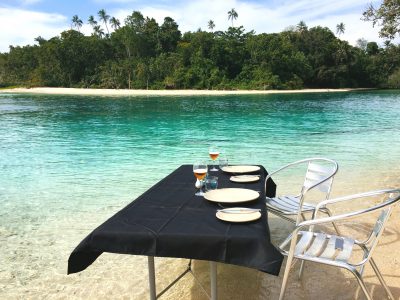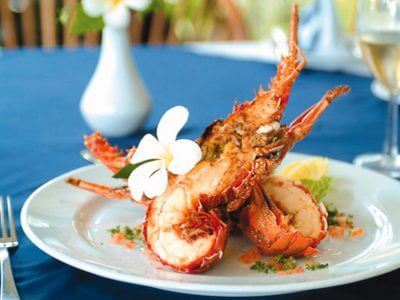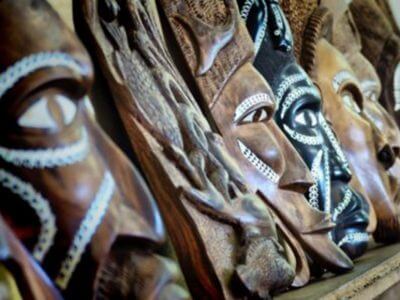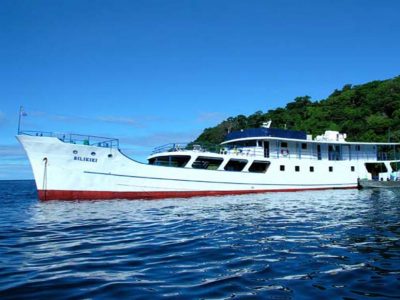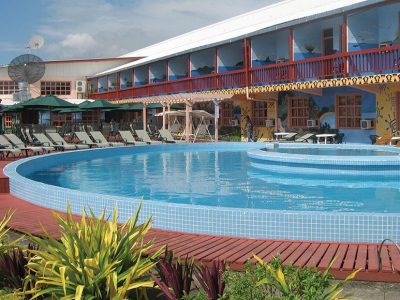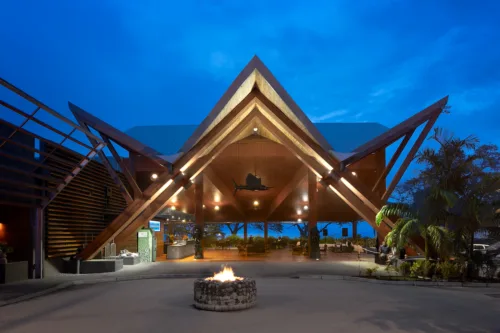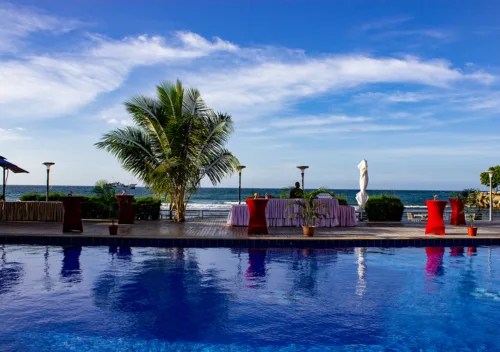Virtually untouched by commercial development, theSolomon Islands are a natural paradise located south-east of Papua New Guinea and only three hours by air from Brisbane, Australia.
The people of the Solomons still practise a traditional way of life, preferring to respect the old customs and traditions. They believe in maintaining and preserving their beautiful unspoiled environment.
Capital and places to visit
The Solomon Islands are geographically fragmented with nine main provinces: Choiseul, Guadalcanal, Santa Isabel, San Cristobal, Malaita, Western, Temotu, Renbel, Central Province and the capital is Honiara.
The Western Province is perhaps the most visited region of the Solomons and its centrepiece is the largest, double barrier lagoon in the world, Marovo Lagoon, that has been nominated for World Heritage listing. Literally thousands of islands scatter the lagoon, from tiny coral islets on the fringing reef to massive 1600-metre volcanic islands. Some are still active and can be visited such as Simbo as well as the undersea volcanoes near Ngattokae. Inside the lagoon, the islands are surrounded by spectacular coral formations and white sand beach.
All the facilities needed by modern visitors are available in the quiet, peaceful town of Gizo, the capital, and surrounds. There are banks, luxury hotels, guesthouses and backpacker accommodation, bars and restaurants.
The province offers traditional villages, secluded beaches, superb snorkelling and scuba diving where you can explore the watery graves of undisturbed WWII relics.
The people
The islanders are smiling, warm, friendly people, mostly Melanesians (90 percent), with some Polynesians, Micronesians, Europeans, and Asians. English is the official language, though there are more than 120 indigenous languages.
History
It is believed that the Austronesians discovered the Solomon Islands about five thousand years ago and Melanesian hunter and gatherer voyagers first settled in the larger islands. Polynesians known as the seafarers later arrived and settled in the smaller islands and atolls that border Solomon Islands’ northern and eastern boundaries.
The Spanish were the first Europeans to visit the islands, Alvaro de Mendana naming them the Solomons. Some of the fiercest fighting of WWII took place in and around Honiara and names such as Bloody Ridge, Red Beach, Skyline Ridge and Henderson Field will live long in the memories of both sides of the conflict. Here in 1942, the bloodiest and longest campaign saw the loss of nearly 38,000 lives and the turning point of the war in the Pacific. There are many battle sites and relics of the war to be found not only here, but throughout the islands.
The Solomon Islands became a fully independent nation in 1978 and today the country operates under a provincial government system of nine provinces. The national parliament adopted a Westminster system and has a democracy-style government.
Nature
The Solomon Islands’ archipelago offers one of the richest underwater worlds on the earth and boasts kilometres of deserted sandy beaches and an unparalleled sense of calm. Lush tropical rainforests cover most of the island group. Exotic orchids, ferns and palms are found everywhere and butterflies and exotic birds are abundant while a variety of trees and shrubs have been introduced along with fruits and vegetables.
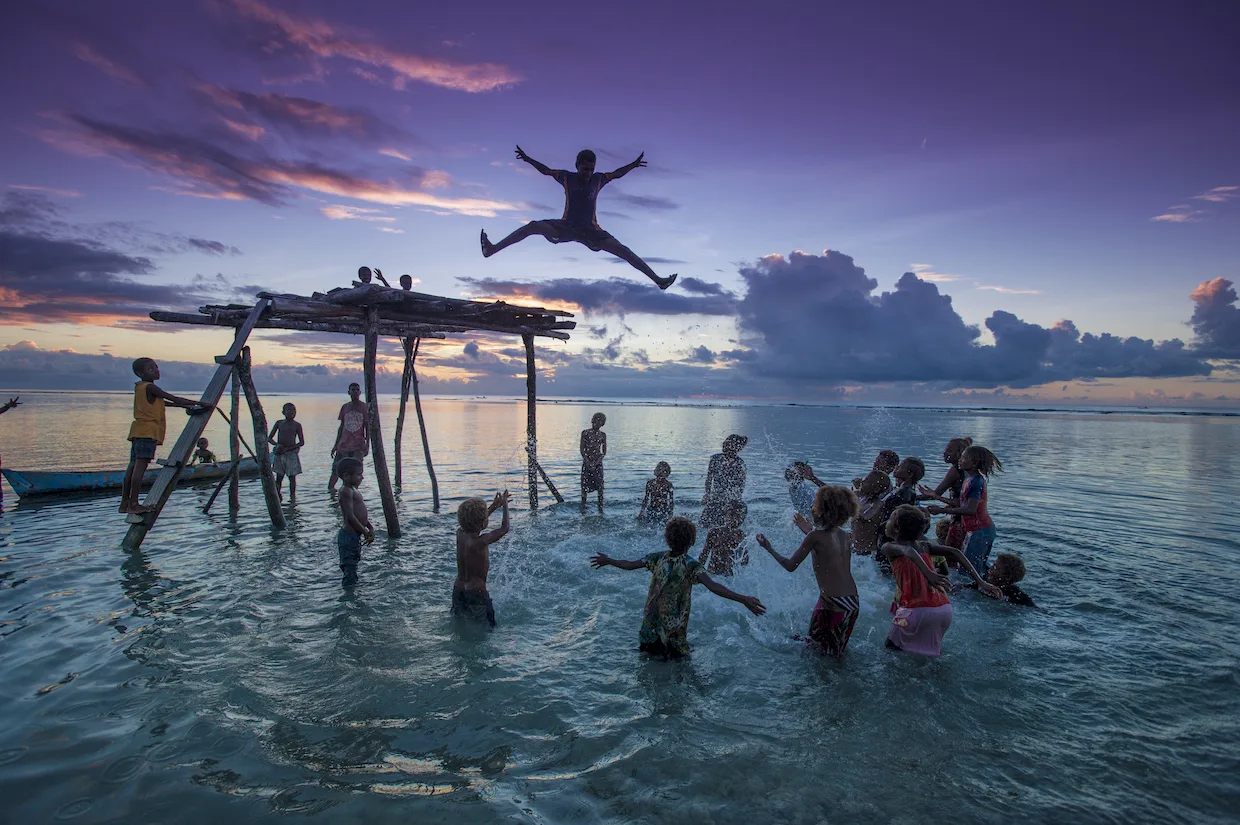
The sights
With more than 300 days of perfect weather each year, this is plenty to do in this tropical paradise.
In Honiara, take time to visit the intact WWII relics of fighter planes, tanks and machine guns slowly rusting in peace as well as Japanese and American war memorials. Learn a little about the history of the Solomon Islands and visit the old hanging site, a relic from the British colonial past.
The National Museum is located in Honiara and the Honiara main market is a good place to find local bargains. The Western Province offers traditional villages, secluded beaches, superb snorkelling and scuba diving where you can explore the watery graves of undisturbed relics from the war.
Day trips to the Central Islands can be easily arranged and Malaita province is also a must-visit.
Where to stay
Wherever you choose to stay, be sure to learn from your hosts a little of the their culture and religion. Depending on your budget you can stay in a premier hotel, in apartments, rest houses, village resorts or in cabins or lodges.
You can unwind in a locally built cabin perched over a pristine lagoon or relax in a self-contained bungalow on the edge of a sandy beach or be mesmerised by the views over the archipelago’s crystal-clear waters from one of the resorts. Those truly wishing to immerse themselves in the local culture may choose a village stay where they can live in a local community and experience the local life first hand.
Getting around
There are public buses, hire cars, taxis – which cost $10 per km, and you can see a lot simply by walking. Interisland travel is available by either by aircraft or boat. Solomon Airlines flies to about 20 destinations throughout the country. They are also available for charter. For those with more leisure time, an interesting option is to travel by passenger vessel.
Activities
There are plenty of activities to keep visitors active and most are aquatic based including world-class surfing, swimming, sailing, windsurfing, waterskiing, game fishing and snorkelling. The islands are renowned as a scuba diver’s paradise with coral, shipwrecks, giant clams, tropical fish and game fish.
Golf, tennis and bushwalking are also offered or trek to Savo, the active volcano just 45 minutes from Honiara. Enjoy a visit to the ingenious man-made islands of the Lau and Langalanga people. There is plenty to do!
Food and entertainment
Major hotels have restaurants and there are international restaurants in Honiara. Hotels have beer gardens and bars and several private clubs welcome visitors. Regular island night barbecues are very popular.
Currency
The local currency is Solomon Island dollars. (SBD) Tipping is not encouraged and visitors are usually asked to refrain from the temptation to do so due to Islanders’ pride and custom.
Climate
The climate is tropical with an average temperature of 29°C. November to April is wetter.
Clothing
Casual wear is widely acceptable though brief swimwear should be limited to beaches.
Getting there
International airlines flying to the Solomon Islands include Solomon Airlines, Qantas, Fiji Airways and Air Niugini.
Shopping guide
High quality craftwork is available and includes ebony and ‘kerosene’ wood carvings, bowls with mother-of-pearl inlays, shell jewellery, baskets, bags, hats and mats woven from pandanus or coconut palm. Although the only craft shops are in Honiara, you can buy work direct from craftsmen and women on the other islands. Daily markets are held throughout the islands and the largest and most colourful market is the bustling Central Market in the capital, Honiara.


